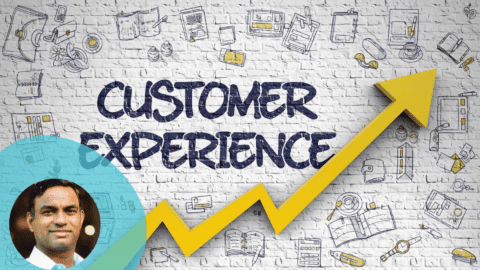Following is Part 2 of the Retail TouchPoints series focused on Creating Winning Cloud Strategies. Part 3 will offer insights from other cloud platform vendors and retail analysts, and will appear in the November 20 newsletter.
Using cloud technology, retailers are able to respond faster to data requests from numerous stores, use time more productively, reduce personnel costs, and circumvent further investment in the overall IT infrastructure.
Additionally, in challenging economic environments, retailers are looking for ways to cut budgets. In doing so, they often restrict spending for technology development, hiring IT personnel and providing help desk support. Cloud systems provide much-needed budget relief. “In this situation, it is not uncommon for retailers to consider outsourcing toward hosted environments that ensure delivery of data, voice, video-to-store and other functions to multiple sales channels,” reported Sahir Anand, VP and Research Group Director at Aberdeen, “as well as to headquarter departments involved in day-to-day retail planning and execution.”
A number of leading retailers are finding benefits from shifting to cloud computing.
“The time saved with cloud computing is immeasurable, which is a key reason why we’re shifting more of our business to programs hosted in the cloud,” noted Gary Kenner, Sr. Financial Analyst at the Schurman Retail Group, in an interview with Retail TouchPoints. Schurman markets social expression products and services under brands including PAPYRUS, American Greetings, Carlton Cards, NIQUEA.D and Paper Threads, , told, “ The company operates more than 400 stores.
Kenner said he receives numerous requests every day from stores for financial data and views. “Using the cloud system, I can meet those requests quickly and with minimal effort, no matter where I happen to be,” he noted, “even if I didn’t take my laptop away from the office that day. All I need is access to the Internet to update the data, generate a report then quickly send it via email. The cost savings in ease of access alone is worth having a cloud-based solution.”
Armed with hosted Corporate Performance Management (CPM) tools from Adaptive Planning, “we quickly can consolidate large amounts of data into precise reports simply through drag and drop; provide business results for the entire company, or just one store; and create trend and variance reports for any specific financial account,” Kenner explained. “In fact, the time required to write budget formulas for our hundreds of stores, make numerous changes and see the results across all business lines has been cut in half.”
In addition, since Kenner and his team self-administer the cloud solution, they no longer wait for IT staff to solve issues, leading to greater productivity. “Servers fail, drives are unavailable and computers crash,” noted Kenner, “but with a cloud-based solution, as long as the Internet is accessible, my staff and I can still produce.”
At Adaptive Planning, CEO John Herr noted additional business needs, especially for omni-channel retailers, that cloud deployment addresses; these include quickly consolidating plan and actual data, and analyzing micro-trends such as SKUs while also rolling up multiple divisions, all in real-time.
“Cloud computing permits this real-time analysis and consolidation,” Herr said. “In addition, it allows geographically dispersed managers to collaborate easily. And as retailers update plan drivers such as floor associate-to-sales staff rates, they can have these plans updated instantly across geographically diverse locations.”
The Cloud Tightens IT Spending
Using cloud systems to reduce and avoid additional IT costs clearly is a motivator for Boot Barn. It is “the biggest advantage of using the cloud,” according to Dave Gusick, Director of e-Commerce for the click-and-mortar, 117-store western wear retailer. “By hosting in the cloud, we don’t worry about hardware and the expense that goes along with supporting it, especially personnel costs,” shared Gusick. ”Though we haven’t measured our savings directly, it’s probably reached about $200,000 a year.“
Gusick said Boot Barn, which uses the Demandware Commerce cloud computing model for mission-critical applications such as digital commerce, has a small IT department with few resources to support an internal solution. All of the retailer’s major applications, such as merchandising, innovation, brand and customer experience management, are hosted in the cloud. “This approach has worked extremely well for us,” stated Gusick. “We will continue to follow the SaaS computing model.”
Similarly, Brooks Sports, a designer and marketer of high-performance running shoes, was drawn to an SaaS cloud approach, also from Demandware, “to avoid investing in the IT infrastructure necessary to host and support our own e-Commerce solution,” according to Meredith Han, Director of Online Marketing. ”We’d much rather focus on innovation and marketing.”
Han stressed that “Brooks is a retailer, not a technology company — yet like all growing brands, we still require sophisticated technology to run our business,” she said. “The ability to access a full suite of commerce functionality to run our online business from any Internet-connected device is incredibly valuable to our team.”
While cloud computing provides smaller and medium-sized retailers with significant cost and time savings, other primary business drivers for retailers of any size are the 360-degree view of customers it provides, as well as the seamless shopping experience across multiple channels and devices it can create. “While larger enterprises typically have the money to throw at on-premise computing issues,” said Rob Garf, VP of Product and Solutions Marketing for Demandware, “they are realizing that there are more important matters to address than managing software, upgrades and infrastructure.”
The Cloud Alters Traditional POS Approaches
In addition, as the cloud develops, traditional POS is changing. “Retailers can’t truly satisfy the desires of technologically savvy consumers until they recognize how their overall commerce operations support digital interactions across a myriad of ever-expanding channels, devices and applications,” Garf stated. said he added that retailers need a centralized hub that powers all consumer interactions, including the various points of sale; they cannot deliver brand experiences and engage with consumers in operational silos.
“Don’t get me wrong: The in-store cash wrap may never go away entirely, but as cloud capabilities develop, the POS software applications no longer will need to be hardcoded to devices such as a tablet, smartphone or computer,” Garf explained. “Instead, the device will become an entry point to a central cloud-based platform that manages all digital commerce. Store associates may continue to provide service and bag merchandise, but transactions won’t be taking place on an island; Hardcoded capabilities — such as inventory availability, loyalty access and promotional applicability — in the traditional POS will be untethered and available via a single commerce instance across geographies, brands and channels.”
Every week retailers from small to large are shifting established IT delivery models, dedicated server stacks and everyday strategies to the virtual cloud community of servers and hosted third-party models. As they do, faster response times and IT cost-savings are just the initial benefits of winning cloud-based retail strategies developing now and yet to be imagined.
Part 3 of the Creating Winning Cloud Strategies feature will appear in the November 20 newsletter.












